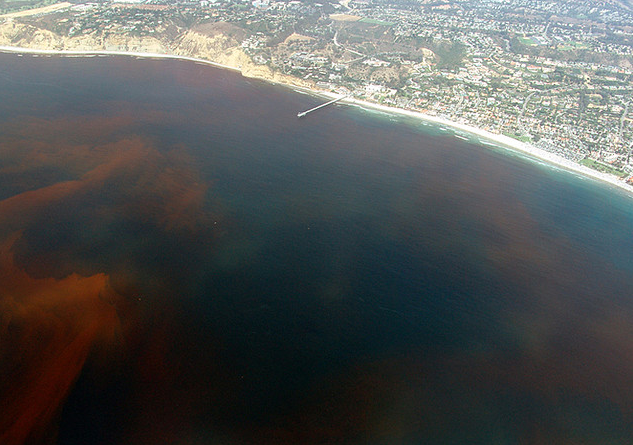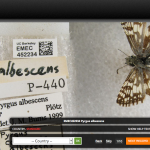We’re all enjoying these days leading up to summer, with the Monterey Bay shining clear and blue. But we know these times are fleeting. Come fall, algae will start to bloom. Clear blue waves will turn brown and red, seabirds and marine mammals will get sick, and swimming advisories could be put in place.
At least, this has become the recurring trend over the past 20 years.
Such “red tides” — also known as harmful algal blooms — are fairly common in coastal communities across the country, and result from changes in ocean currents and influxes of nutrients. Some blooms are harmful because they grow so thick that they they block out sunlight to life below, while others are harmful because they produce dangerous levels of naturally-occuring toxins.
Alanna Lecher, a third year PhD student in the Earth and Planetary Sciences Department at UC Santa Cruz, is currently working to understand why the blooms happen when they do in the Monterey Bay. She knows that ocean currents tend to slow down and push algae toward Santa Cruz in late summer, but currents cannot explain the blooms entirely.
“You can pool all the algae you want, but if you don’t feed it, it doesn’t grow,” Lecher said during a poster presentation at the 9th Annual Graduate Research Symposium at UCSC. “So we’re trying to figure out what’s feeding it.”
Nutrients that feed algae — like nitrogen and phosphorous — enter bays in three main ways: river discharge, groundwater discharge, and in deep ocean currents that swell up to the surface through a process called upwelling.
While upwelling and river discharge are major drivers of blooms elsewhere, they are unlikely culprits in the Monterey Bay. By mid-fall — at the end of the dry season — rivers have usually dried down to a trickle and upwelling tends to be at its weakest.
Knowing this, Lecher has honed in on groundwater. With her advisor, Adina Paytan, she is testing whether local groundwater contains the right suite of nutrients required to instigate a harmful bloom. She has already conducted a series of preliminary experiments at Long Marine Lab in downtown Santa Cruz, where she grew algae in tanks containing different levels of groundwater and water from elsewhere in the bay.
Her results, so far, have shown that Pseudo-nitzschia — the dominant algae in Monterey Bay red-tides — does, indeed, grow best in tanks with high concentrations of local groundwater. Unlike water from further out in the bay, groundwater contains high levels of silica. Pseudo-nitzschia use silica to make tiny glass shells that protect their bodies. Lecher believes that silica from groundwater could accumulate in the bay in late summer when river discharge and upwelling waters are too sparse to dilute it.
Lecher’s next step, she says, is to collect more water samples from around the bay to better quantify the nutrient inputs at different sites. Ultimately, this could help pinpoint and mitigate the source of nutrients causing these harmful blooms, and extend the clear blue period of Monterey Bay further into the fall.








Comments are closed.